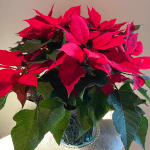Are You New to Caring for Poinsettias or Frustrated with Poinsettia Care?
If you’re new to taking care of Poinsettias, or just plain frustrated with them, you’re not alone. Poinsettias can be incredibly fragile and too much water, not enough water, too much heat, or not enough heat can all lead to Poinsettias failing to thrive. To start out on the right foot caring for your Poinsettia, here’s what you need to know about watering them.
The Origins of Poinsettias
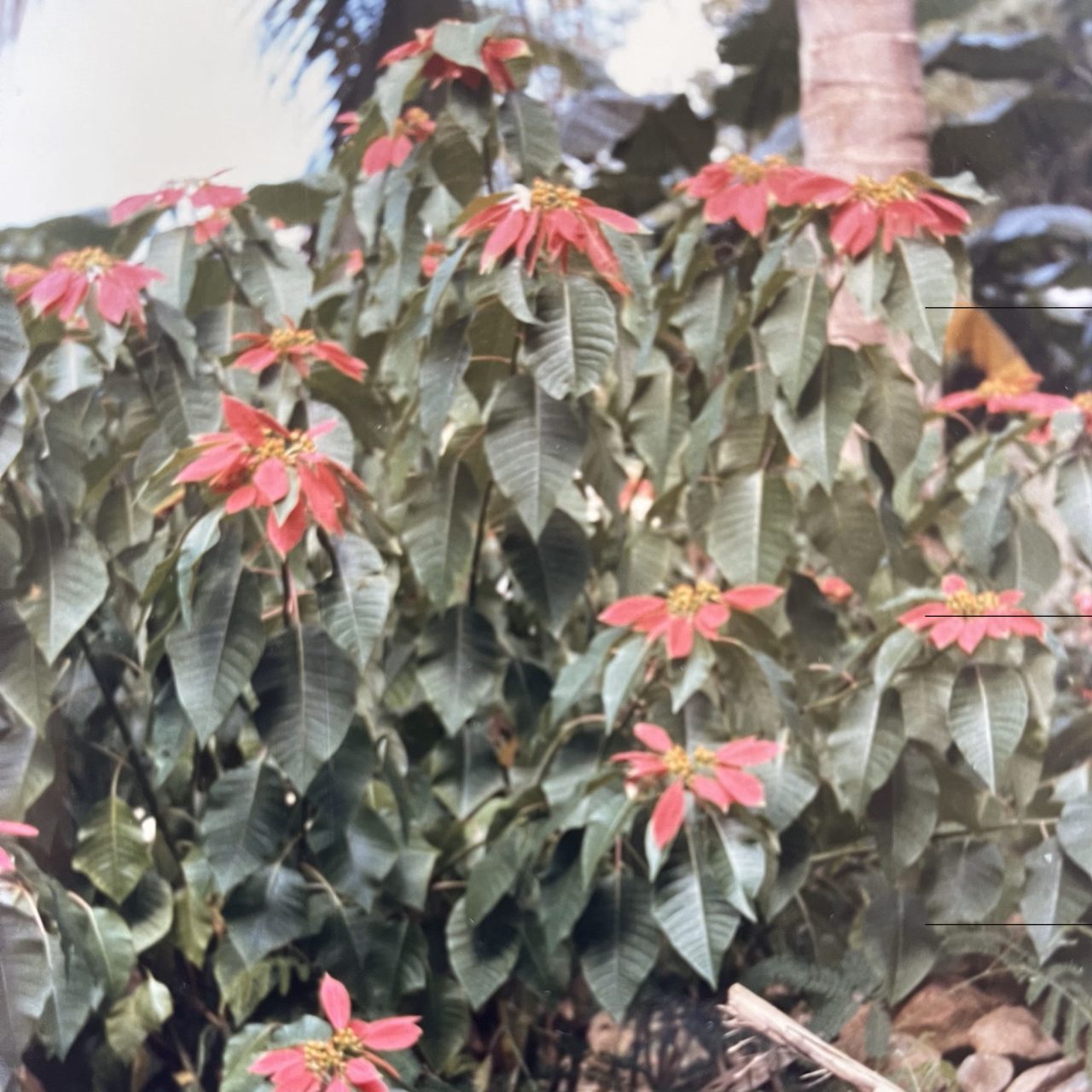
Poinsettias are an indoor plant for us in North America because they originate from the tropics of southern Mexico and northern Guatemala, where they grow up to 3m (9′) as a winter flowering plant.
Poinsettias receive their signal to bud and flower from day length. When the hours of daylight dip below 12 hours, the flowering process begins.
Poinsettias are from the Euphorbiaceae family, also known as Spurge.
Euphorbias share many common features, but one of the most notable is their white sap, known as latex, which can be a skin irritant to some people.
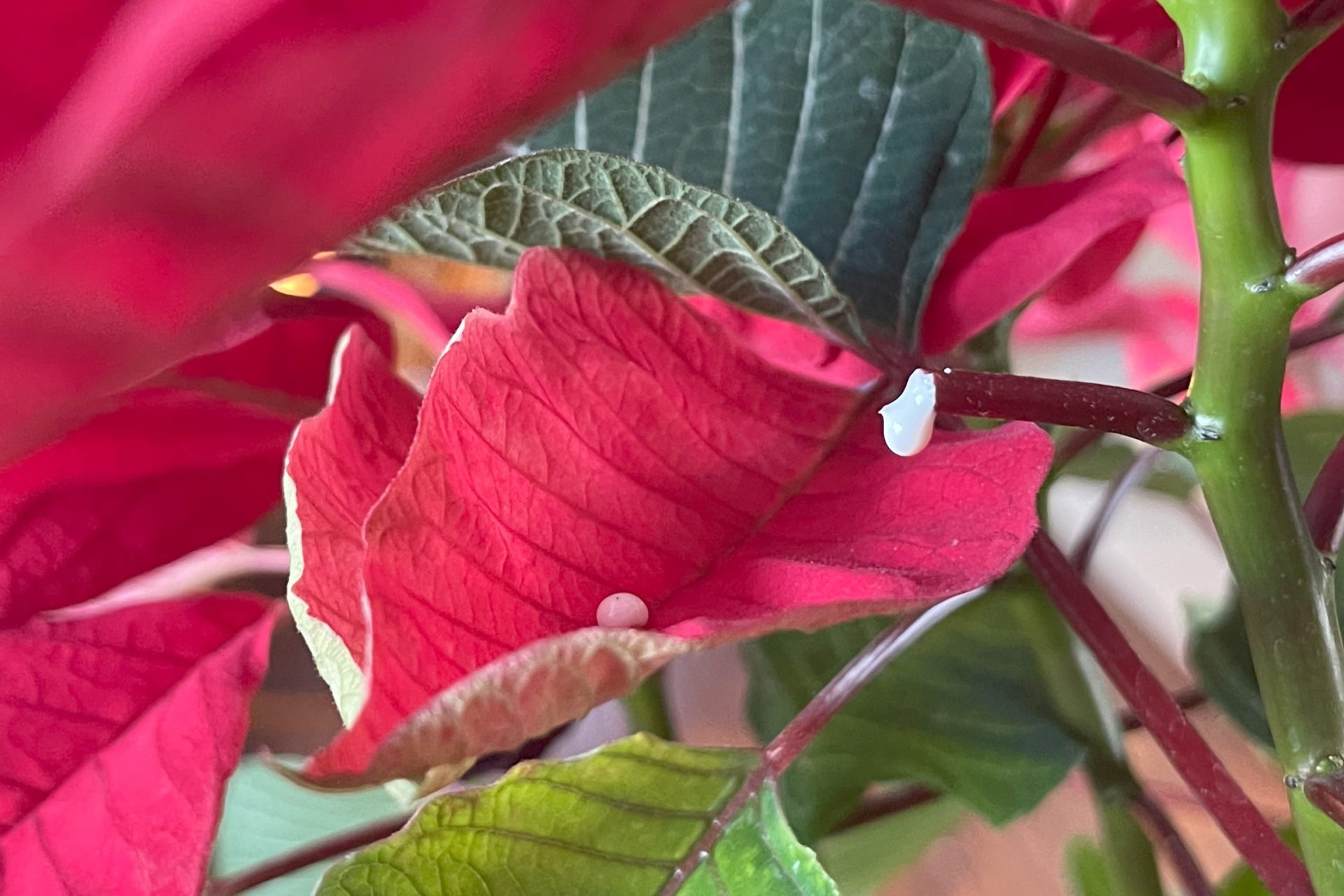
Poinsettia flowers were used as a dye, and they also had a few medicinal applications used by the Aztecs.
In the 17th century, Franciscan priests used them for nativity celebrations.
Following that, Joel Poinsett, the first US ambassador to Mexico and also a talented botanist, discovered Poinsettias for the western world in Taxco, Mexico, in 1825.
He carried some back home, learned to propagate them, and shared them with friends and botanical gardens. As they became more popular, they became known as ‘Poinsettias’, named after Joel Poinsett.
Tropical regions have a very thin layer of topsoil that quickly dries out, which plays into the indoor care of Poinsettias.
To adapt to this environment, Poinsettias have shallow roots that can withstand periods of dry weather interrupted by light rain.
This tells us that they don’t require excessive watering.
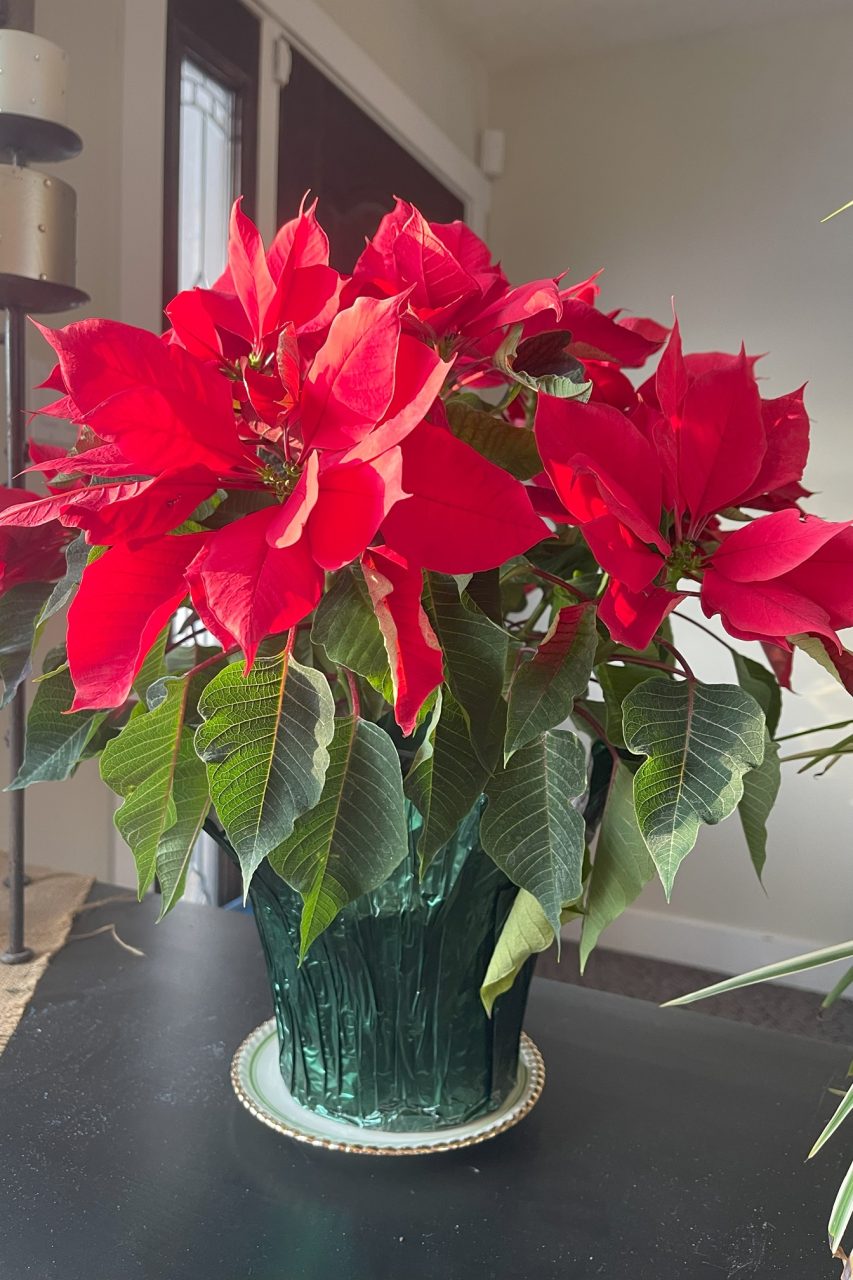
In fact, Poinsettias are susceptible to developing root rot if the soil remains too moist.
In the home, more Poinsettias perish due to overwatering rather than underwatering because of the development of root rot.
To add to the confusion, Poinsettias with root rot may appear wilted, giving the impression that they need more water when, in fact, they are begging for less.
Wilting is a universal sign of distress for a Poinsettia. They will wilt if they are too cold, too hot, too dry, or too wet.
Since we associate wilting with plants needing water, we tend to overwater them, exacerbating the situation.
How to Check if Poinsettias Need Water
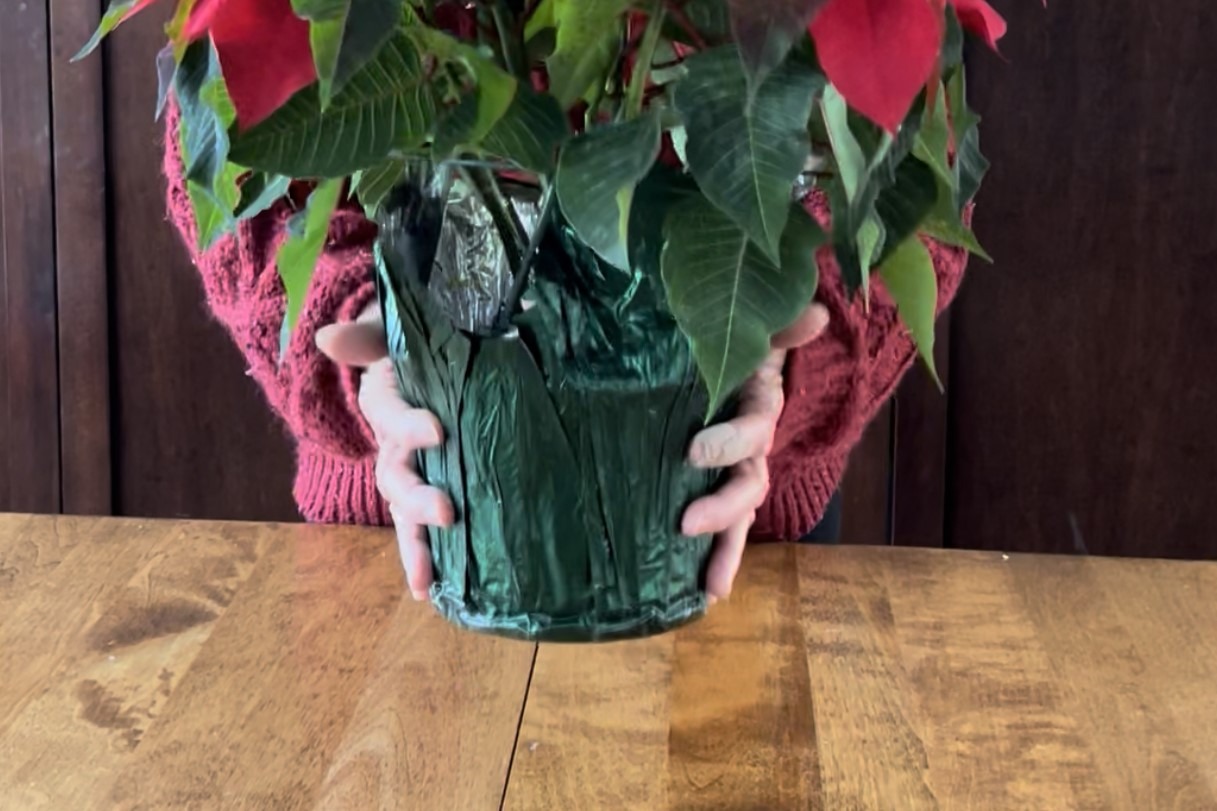
Because of the risk of Poinsettias developing root rot, always check if the soil is dry before watering.
Two Simple Ways to do a Soil Check on Poinsettias:
As with most things horticultural, there is more than one way to accomplish a task. Here are two simple ways to check the soil moisture level of Poinsettias growing in pots.
1. Insert your finger into the soil to determine its wetness.
2. You can also lift the pot and gauge its weight to determine the hydration status of a Poinsettia.
When a Poinsettia has been fully watered, take note of how heavy the pot is as a baseline reference, and when the Poinsettia pot feels light, it’s time to water it. You may even be able to wait a day or two, but it’s important to catch and water it before the Poinsettia wilts.
Two Ways to Water Poinsettias
Before watering, always remove the outer decorative wrap around the Poinsettia to allow excess water to drain to reduce the chances of root rot.



Two Effective Methods of Watering a Poinsettia:
1. Water the plant thoroughly by pouring water at the top of the soil until it begins to drip out.
2. Alternatively, you can place the Poinsettia pot in a shallow bowl and allow it to absorb water from the bottom.
Replace the decorative wrapping and enjoy your Poinsettia!
For More on Poinsettia Care
Take your Poinsettia to the next level with these two blogs:
- How to Care for Your Poinsettia in 3 Simple Steps,
- How to Get Your Poinsettia to Rebloom and Stay Beautiful Year-Round
Poinsettias are often a signal that the holiday season has begun. Their gorgeous and vibrant colours brighten up every room, and the large blooms add both elegance and whimsy to your decor. If you’ve decided to take on the care of a Poinsettia plant this year, be sure to follow my steps and ensure you have beautiful blooms throughout the holidays! Enjoy this amazing, seasonal plant during the Christmas holiday season!
©Sharon Wallish Murphy ©Gardening with Sharon















